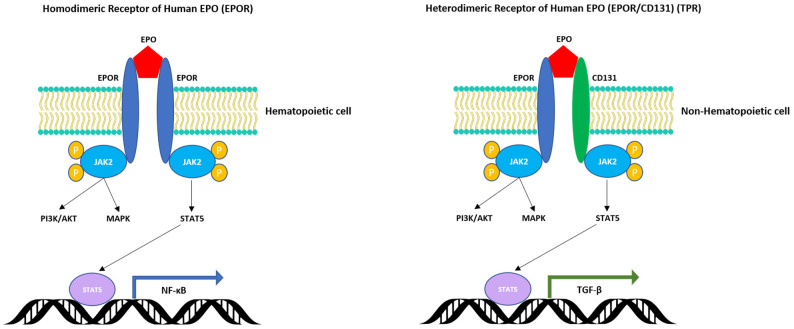Figure 2.
Illustration of the interactions of human EPO with its homodimeric (EPO-R) and heterodimeric receptor (EPO-R/CD131, or tissue protection receptor (TPR)). These receptors are activated in hematopoietic (erythroid progenitors) and non-hematopoietic cells (brain, heart, skeletal muscle cells, others), respectively. Activation of the homodimeric EPO-R receptor leads to cell signaling in BM proerythroid cells, while activation of the heterodimeric EPO-R/CD131 leads to the increase of cell renewal, survival and protection of non-hematopoietic cells. For both cases of EPO-R signaling, the activation pathways shown above are mediated by the phosphorylated JAK2 kinases, which then interact with the intracellular regions of the receptor and activate the PI3K/AKT, MAPK and STAT5 molecules by a phosphorylation cascade. The transcription regulator STAT5 interacts with consensus DNA sequences that facilitate the activation of the NF-kB transcription factor [5,6,57]. In the case of the activation of the EPO-R/CD131 receptor by EPO in non-hematopoietic tissues, the induced cell signaling promotes the phosphorylation of similar molecules, the activation of STAT5 and eventually the expression of TGF-β [28].

